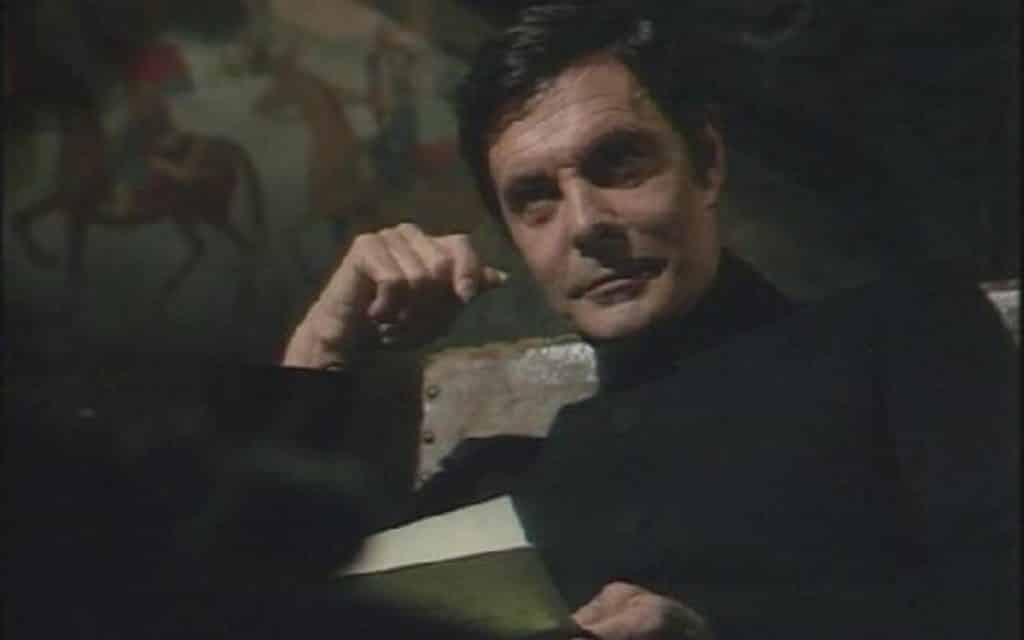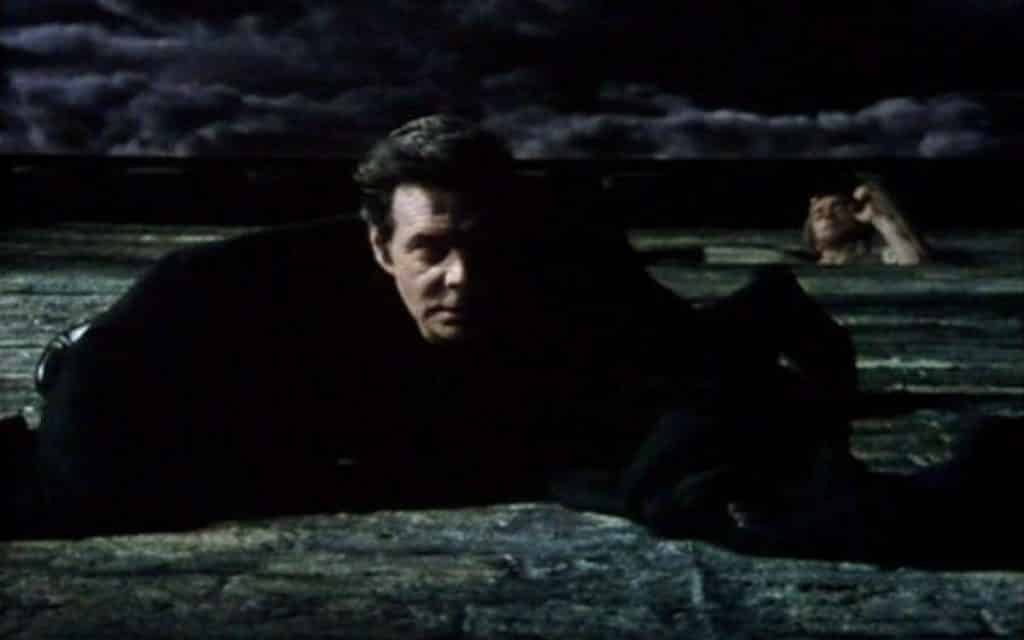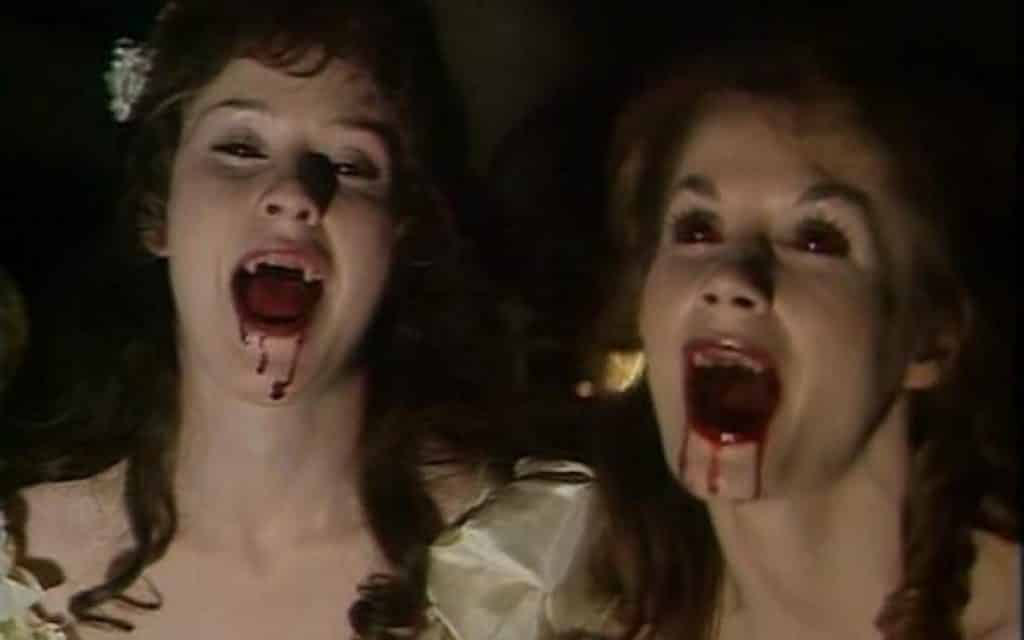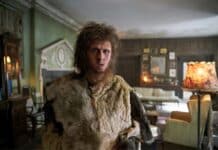TERRY SHERWOOD looks back at the 1977 BBC television production of Count Dracula, starring Louis Jourdan as the king of vampires

The night air is chill in this one as I look at the magnificent Gerald Savoy-dramatized BBC produced television film, simply and elegantly called Count Dracula.
This 1977 production is, without a doubt, the most faithful, intriguing look at the eternal story from the Bram Stoker novel. Like the source material, the production chronicles the events and repercussions of Dracula’s interaction with a segment of English society at the turn of the 20th century. The book is a product of its time, which was 1897. Society was changing and this was mirrored (no pun intended) by the characters in the book.
A reading of the classic novel allows for social and political changes to be seen in a microcosm as the Count himself is the face of the “invading foreigner”. Not only does the Count invade, but he also brings new ways, new customs, new morals and attitudes. Perfect showcase is when Dracula, in the person of the brilliant Louis Jourdan, says: “The blood of a human for me, a cooked bird for you. What is the difference?”
Very briefly, you have Arthur Holmwood, Lord Godalming, representing British values, Doctor John Seward representing academia, and Quincy Morris, the American adventurer. Jonathan Harker is the young fellow, fiercely independent or trying to be, and yet still controlled by older British values. Doctor Abraham Van Helsing from Amsterdam represents the arcane world of Europe with his esoteric knowledge.
The focal point for all of these people, including Dracula, and the driver of the story, is their love of Mina Harker. Lucy Westenra is the wild, risk taker, forward woman. She pays for her personality with her life. Renfield, the insect eating, weak minded fellow in Seward’s asylum, is society in turmoil. Does he hold the key to Dracula’s destruction? You must be insane to reestablish the order at the end of the story. These characters shine through their closeness to the novel.

There are some changes to the story for the sake of the film, plus some have complained about the look of Louis Jourdan in the role of Dracula. His hair style and mannerisms seems too 20th century. Dracula’s famous crawl down the Castle wall, which Harker witnesses from his window, is shown for the first time. Hammer films did the sequence in Scars of Dracula (1970), just not like this. The “solarised’ effects look dated. The attempts to show various locales during Harker’s journey to the castle become obvious footage breaks, yet work given the production technology of the time.
Frank Finley is a brilliant, older, dotting yet commanding Van Helsing, who looks like a Dutchman, which is what the character was. Susan Penhaligon and Judi Bowker do the fragile, yet strong Mina and Lucy justice. You can see the backstory between these two people.

The graphic scene (for the time) is when Dracula brings a human baby in a small bag for his vampire women to feed on. It is shown for the first time, depending on if you view the edited version of the production. One of the very subtle moments of the book is sadly missing, that being when Dracula, disguised as the coach driver, stops the coach at night to deal with wolves. To Harker’s dismay, blue flame erupts from the ground as Dracula walks, signaling a mythical fortune. This sequence was actually done quite well in the abhorrent Coppola film Bram Stoker’s Dracula. In fact, that and the use of the Hungarian language are the picture’s only redeeming components for that one.
This version of Count Dracula from the BBC has the production values, costumes, locations and moody direction as the story shifts emphasis from slow terror moments like Dracula offering Mina his blood to a horseback chase. Music is exceptional in this production as tones, and strings are heard a solid chorus similar to some of the work by Kronos Quartet
So when you are ready, get yourself a bottle of Tokaji wine and some paprika chicken. Enter freely. Go safely. Leave some of the happiness you bring. For in this one, The dead do travel fast will ring true.










Terry Sherwood’s brilliant look at the various Dracula films, was superb and an important no, essential guide for fans.
I’ve seen all the films reviewed and though I find it hard when Christopher Lee is not in a version, I believed for a long time that Louis Jordan’s BBC version is my number one, to me it follows Stoker’s novel faithfully.
I of course love the 1958, but not keen on the fact Jonathan Harker comes to the castle, first time in readiness to kill Dracula. Also in many versions Mina appears as Lucy and vice versa, this may be wrong and just the way I see it.
I have just seen the Dracula version from 1977 on the you tube channel and it was very good and agree that it is faithful to the book more- giving me the inspiration to read the book again very soon. But to me there is only one Dracula – Bela Lugosi, the sheer handsomeness, the look and Hungarian accent of the 1931 film. He is the best and only the best. Not just the film he starred in but also all the plays and the first play of Dracula in 1927 on Broadway.